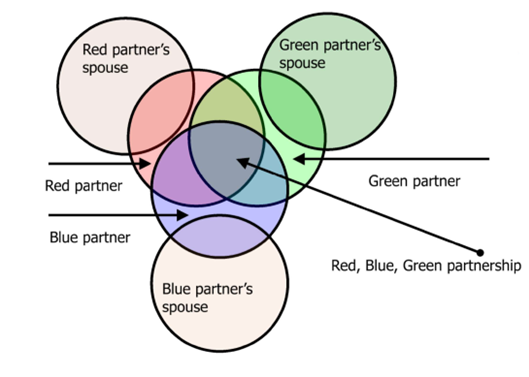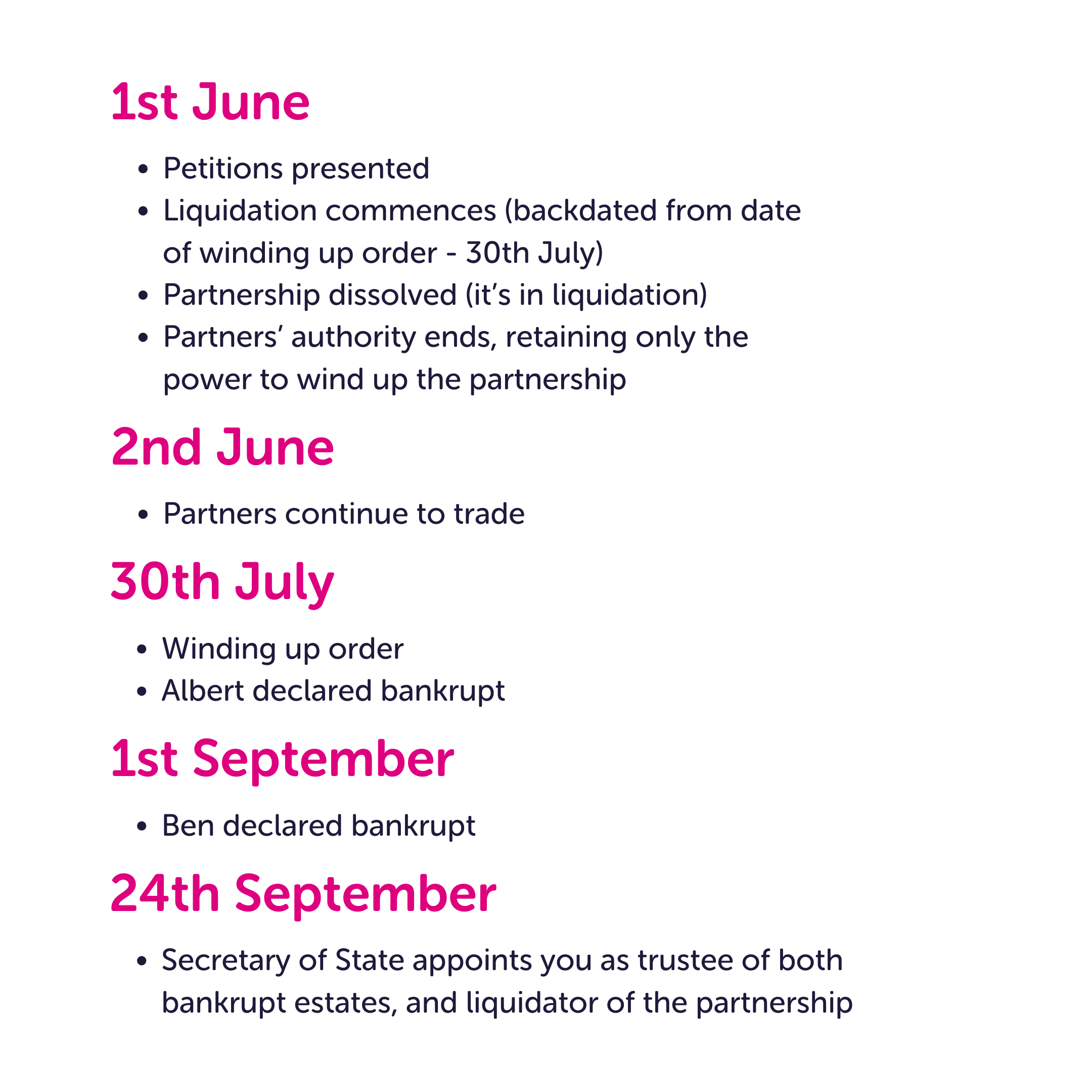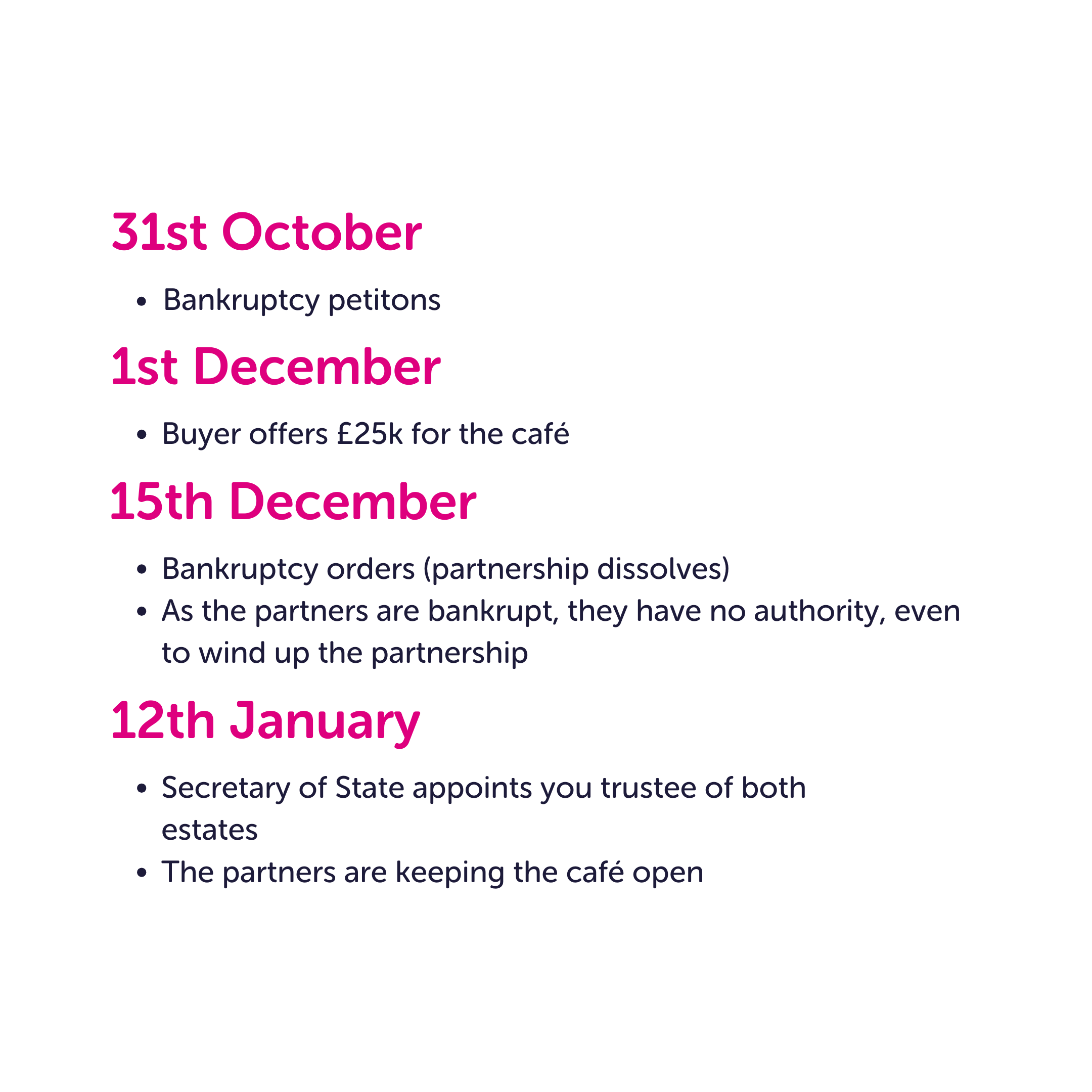In his latest Coffee Break Briefing webinar, Frettens’ own Insolvency Guru Malcolm Niekirk held his second session on Insolvent Partnerships, giving some case studies on the notoriously difficult area.
This is the summary of that briefing.
If you'd like to watch the webinar back, you can do so below, if not, read on for our summary.
Quick Links
- Recap from session 1
- Unscrambling bankrupt partners’ estates
- Case study – Zombie Partnership
- Case study – Partnership Untouchable
- Partnership administrations
Recap from Session 1
As a quick reminder of what we covered in last month’s session:
- A partnership is only a relation between people who carry on a business in common with a view of profit (it’s not a corporation)
- A partnership doesn’t have its own legal personality – it just describes the relationship between the partners – and therefore can’t itself own property or make contracts
- As a result, a partnership is a complicated mix of several estates, and you’ll need to unscramble them in an insolvency. Common insolvency procedures for partnerships are bankruptcy, voluntary arrangements, compulsory liquidations, or administrations. CVL or MVL isn’t an option.
Read the rest of session one here.
Unscrambling bankrupt partners’ estates
Take a look at the below diagram, which shows three partners; red, green and blue. The central part of the diagram is their joint partnership estate.
Each partner is jointly responsible for all of the partnership’s debt, so any partnership creditors are actually creditors of each partner individually.
This means that, if one partner goes bankrupt, their bankruptcy debts will be their personal debts and all the partnership debts. If they personally own some of the partnership property, it will be outside the bankrupt estate (that’s because they don’t own it beneficially; they hold it on trust for the partners in the partnership).
So, as trustee of one partner’s personal bankruptcy, your interest in the partnership will only be the net balance on that partner’s current and capital account. You have no call on the property and assets used in the partnership.

If the partnership itself is insolvent, and you are liquidator of the joint estate, you would have to pay the partnership debts from the partnership assets in the joint estate, in the following order:
- Preferential creditors
- Ordinary creditors
- Interest on those ordinary creditors
- Postponed debts
- Interest on postponed debts
Any surplus would be shared amongst the partners, and any shortfall would be claimed from each partners’ estate.
That shortfall – rather than the individual creditors of the partnership – will be the claim in the bankruptcy of each partner.
As trustee of an individual partner’s bankrupt estate, you’ll have to pay their personal debts from their personal assets in the same order of priority. Any surplus goes to the bankrupt, and, on discharge, they would be released from any shortfall.
Case Study – Zombie Partnership
HMRC has finally caught up with two brothers, Albert and Ben Zombie, who are in partnership together. HMRC petitioned for bankruptcy of both, and winding up the joint estate in a compulsory liquidation..
The timeline for this case study is as follows:

In this situation, there is a series of partnerships. The first and original partnership was dissolved at the start of the liquidation on 1st June.
Partnership #2 started the next day, when they went back to work, coming to an end when Albert became bankrupt (30th July).
After this, both partners went back to work on 31st July. Thus they started in partnership #3. This came to an end upon Ben’s bankruptcy (1st September). And finally, partnership #4 began when they went back to work after Ben’s bankruptcy on 2nd September, and is likely still going.
In such a scenario:
- You are the liquidator of the first partnership, which still owns its assets.
- You are the trustee of Albert’s bankrupt estate, which includes his share of partnership #1 and #2.
- You are trustee of Ben’s bankrupt estate, which includes his share of partnership #1 #2 and #3.
- But, technically, you have no authority over the assets in partnerships #2 and #3. Fortunately, though, they are minimal.
Case Study – Partnership Untouchable
HMRC has petitioned for bankruptcy against two partners, Yvonne and Zeke Untouchable, trading as the Untouchable Café.
The timeline for this case study is as follows:

In such a situation, as trustee of the several estates:
- Legal title to the family home does not vest in you.
- You have no authority to deal with the partnership assets.
- You have no authority to wind up the partnership (and neither do the partners, as they are bankrupt)
- You can claim any surplus due to either estate when the partnership is wound up.
- That is your only interest in the partnership assets.
The delay is jeopardising the sale of the café to the buyer.
Your options here are as follows:
- Petition for a winding up order over the partnership, with you appointed as liquidator
- This might take too long, and there will be a fair amount of cost involved
- Seek the appointment of a provisional liquidator, with a winding up petition
- Allowing quick sale, but with a great deal of additional cost
- Take a view and sell the café anyway
- But the buyer’s solicitor might not accept that you have title to sell the lease
- It would be difficult without authority to deal with the proceeds of sale – you would not be entitled to take your costs and expenses from them.
- Apply to court to give you express power to administer the joint estate in bankruptcy
- This would be the ‘textbook’ approach
- See whether administration might be possible
- Quick, relatively inexpensive but not always possible
- Joint sale by the bankrupts, with you joining in to receive the proceeds
- But, again, you have no authority to deal with the proceeds of sale, and no authority to use them to pay costs and expenses
Partnership administrations
As with companies, informal appointments are possible here. There are no qualifying floating charges, but farming partnerships can create agricultural floating charges (which are treated as qualifying floating charges). And the administration moratorium may not be watertight.
The administration moratorium works well in a corporate administration, but not so well in a partnership administration – as it is not always clear what is a personal liability and which is a partnership liability.
The administration moratorium is supposed to block legal proceedings against the partnership. But a partnership is not an entity as it has no legal personality.
If the partnership is not in administration, and a creditor wants to take debt recovery action, they could sue:
- The partners in the name of the firm,
- The partners’ trading as Untouchable Café,
- The partners as individuals, or
- Just one (or more) of the partners.
The administration moratorium is supposed to protect the partners from partnership creditors, but perhaps not personal creditors. Here’s some examples, in my mind:
Partnership Creditors | Personal Creditors |
PAYE on staff salaries | Income tax on partnership profits |
Rental arrears on a car leased in the partnership’s name | Rental arrears on a car leased in the partner’s own name, and paid from his own bank account |
The partnership overdraft | A personal loan for funding partnership capital |
VAT |
|
Upcoming events
Thanks for reading this summary…
My next Coffee Break Briefing will be on Monday 10th March.
And, we now have a date for our big annual Insolvency Conference – Friday 13th June. It’s taking place at the lovely Beaulieu Inn in the New Forest, and I do hope you can join me. We’ll be sending the invite out to the list shortly.
Make sure you’re subscribed to our email list to receive event information and webinar links straight to your inbox.
Specialist Insolvency Solicitors
If you have any questions after reading this article, please don’t hesitate to get in touch with our bright and experienced team.
Call us on 01202 499255, or fill out the form at the top of this page, for a free initial chat.




Comments